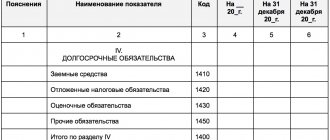What is revenue from product sales?
Revenue from product sales represents cash income received by an organization from customers for products sold. The indicator expresses the monetary relations between producers and consumers of goods. Revenue from sales of products is determined based on the quantity of products sold and their cost. For tax purposes, it is recognized as income from sales.
Revenue is not profit; a separate line is allocated for it in the “Income Statement”. The head of the organization must ensure the uninterrupted flow of revenue, since without this the business simply will not be able to function.
The following factors influence the amount of revenue from product sales:
- internal (production volume, range of manufactured goods, their quality and competitiveness, level of prices applied, cost, compliance with contractual terms, etc.);
- external (violation of contract terms, interruptions in transport, etc.).
How does revenue differ from income, turnover, profit?
In order not to get confused in economic terms, let's immediately understand how they differ from each other. To do this, we will give the definitions of income, turnover and profit.
Income
In Accounting Regulations 9/99 “Income of the Organization,” income is recognized as an increase in the enterprise’s benefits from the receipt of assets (money or other property), as well as an increase in the company’s capital arising in connection with the repayment of obligations. The exception is contributions from property owners.
To put it simply, income is all the funds that go to the company’s accounts and lead to its enrichment. Income includes not only revenue, but also the financial results of other operations.
Income is divided into 2 categories: from ordinary activities, and others.
Fig. 1 Enterprise income
As can be seen from Figure 1, revenue from core activities belongs to income from ordinary activities, while financial and investment revenue can be classified as other income. If we compare revenue with income, then the company's income is a larger category. In this case, revenue is one of the components of income.
The same type of income may be revenue for one company and income for another. For example: engaged in cargo transportation. Last year, one of the warehouses owned by the company was leased. In accounting, the receipt of rent was taken into account as part of other income, for tax accounting purposes - in the form of non-operating income. The proceeds from the main work will be all financial receipts from the transportation of goods.
Another example: Novostroy LLC leases commercial and residential real estate and does not conduct other activities. For both accounting and tax purposes, all funds received from renting out premises will be considered revenue from core activities.
Turnover
The term “turnover” means the full circle of rotation of an enterprise’s funds for a specific period. This takes into account the inflow of finance through receipt of revenue and other operations related to the return of money from third parties, obtaining loans and credits. In this case, both the circulation of cash and non-cash payments are taken into account.
In fact, the indicators “revenue” and “turnover” are in most cases the same. But sometimes they differ, which may be due to different methods of revenue recognition, which will be discussed below.
Revenue, income and turnover reflect “gross” receipts of funds, while costs are not taken into account.
Profit
But this indicator takes into account the costs that an entrepreneur has to bear. To determine profit, you need to subtract from the amount of the company’s income (which includes revenue) the costs of purchasing raw materials and materials, wages to employees and deductions from them for pension and health insurance, costs of storage, transportation, sales, advertising of goods, etc. d. Depending on what expenses are taken into account, different types of profit are determined: gross, from sales, before taxation, net, balance sheet, operating.
We said earlier that revenue cannot be a negative indicator. In this regard, profit can just take a value below zero if the company's expenses exceed its income. Negative profit constitutes a loss for the company and characterizes its activities as ineffective.
Read more in a separate article on our website: What is profit: types, differences from revenue and income, calculation formulas.
Calculation of revenue using the formula
Let's look at how to find revenue from sales of products using the formula. When making calculations, it is necessary to take into account the current sales volume and prices. The general formula for revenue from product sales looks like this:
B = Q × P
Here:
Q – number of goods sold;
P – selling price.
The formula can be used to evaluate an organization's performance and build long-term plans.
In practice, accounting for revenue from the sale of products, works and services is carried out using two methods:
- cash method (if the moment of sale is recognized as the fact of receipt of money to the seller’s bank account);
- accrual method (if the moment of recognition of income is the fact of shipment of goods).
Types of revenue
Proceeds from the sale of goods (services) consist of funds or other property in monetary terms that are received or are to be received from the sale of goods (products, services, works) at prices and tariffs in accordance with the concluded agreement.
The activity of the enterprise is characterized in several areas:
- The main activity from which revenue comes from the sale of products (performance of work, provision of services);
- Investment activity, the proceeds from which are expressed in the form of a financial result from the sale of securities or the sale of non-current assets;
- Financial activities (revenue).
Total revenue can be determined by summing the revenue from these three areas. But, nevertheless, the main significance in it is revenue from core activities, which determines the entire meaning of the existence of enterprises.
How to Calculate Gross Sales Revenue
The gross revenue of an enterprise is the entire amount received into the organization's budget from activities without expenses.
Namely:
a) the amount from the main activity; b) from investments and transactions of the enterprise;
c) from other financial activities
By summing up the entire amount of money received as a result of activities and not taking into account expenses, we get gross revenue. The main activity of the company is sales.
Therefore, item a) will be considered gross sales.
Examples of revenue calculation
Examples of calculating revenue from product sales in different ways are given below.
Example 1
LLC "Electrod" is engaged in the production of lamps. During the reporting year the following products were sold:
- lamp “Ella” – 700 pieces at a price of 250 rubles;
- lamp “Teresa” – 600 pieces at a price of 340 rubles;
- lamp “Miranda” – 400 pieces at a price of 600 rubles.
The annual revenue will be calculated as follows:
B = (700 × 250) + (600 × 340) + (400 × 600) = 619 thousand rubles.
Example 2
IP Petrov A.A. applies the cash method of accounting for income and expenses. On January 25, 2021, the entrepreneur delivered goods to the buyer for a total amount of 180 thousand rubles. On March 5, 2021, the individual entrepreneur agreed with the buyer on a mutual settlement in the amount of 106.2 thousand rubles. (including VAT – 16.2 thousand rubles). What revenue should an entrepreneur report?
As of the date of the offset agreement with the buyer (March 5, 2021), the individual entrepreneur is obliged to take into account income in the amount of the repaid debt (excluding VAT): 106,200 – 16,200 = 90,000 rubles.
Example 3
On February 12, 2021, Teplomash LLC shipped goods worth 600 thousand rubles to Ryabina LLC. Ryabina LLC paid off with Teplomash LLC on April 3, 2021, transferring money to its bank account. Teplomash LLC uses the accrual method when accounting for income, so all revenue will be displayed in accounting and tax accounting in February.
main sources
To date, revenue can be received from:
- main activity - selling products, performing work or providing services. So, for a store it will be the sale of goods, for a law office it will be the provision of legal services;
- investment activity , which includes work with company shares, securities and even enterprise assets that are not involved in trade turnover. For example, a large corporation may sell part of its shares in order to receive investment;
- financial activity of the enterprise . For example, the owner of an enterprise invests money in a particular project with the aim of making a profit, puts money on deposit in a bank, and so on.
If you add up the funds received in these three areas, you can ultimately get the total profit of the enterprise.
For example, profit from core activities is 920,789 rubles per month, investment activities - 34,000 rubles, financial activities - 265,000, therefore, the total profit for the month will be: 920,789 + 34,000 + 265,000 = 1,219,789 rubles.
In accounting, this concept refers to funds received from the main activities of the company, while the remaining funds are usually called “other income” or “interest income.”
Reflection in accounting
Account 90 “Sales” is used to record revenue from sales of products. The account consists of several sub-accounts. Postings for revenue from sales of products are compiled in order to determine the financial result from sales. The mandatory conditions under which revenue is recognized in accounting are given in PBU 9/99.
Example 1
Rubezh LLC sold spare parts for the amount of 354 thousand rubles. (including VAT – 54 thousand rubles). Revenue is recorded at the time of shipment. The cost of goods is 210 thousand rubles, sales costs are 35 thousand rubles. The buyer transferred the money to the seller.
The entries for revenue from the sale of finished products will be as follows:
- Dt 62 Kt 90 – revenue from the sale of finished products is reflected on the day of shipment - 354 thousand rubles.
- Dt 90 Kt 68 - the amount of VAT is reflected - 54 thousand rubles.
- Dt 90 Kt 43 - the actual cost of spare parts is displayed - 210 thousand rubles.
- Dt 90 Kt 44 - sales expenses written off - 35 thousand rubles.
- Dt 51 Kt 62 – funds received from buyers for the products received amounted to 354 thousand rubles.
Calculation of financial results: 354,000 – 54,000 – 210,000 – 35,000 = 55,000 (rub.).
After the postings reflect the revenue from the sale of finished products, we take into account the financial result:
- Dt 90 Kt 99 - a profit of 55 thousand rubles was received.
Example 2
The organization sold spare parts in the amount of 354 thousand rubles. (including VAT – 54 thousand rubles). Revenue is recognized at the time of payment, and selling expenses are written off entirely to cost of goods sold. The cost of spare parts is 210 thousand rubles, sales costs are 35 thousand rubles. The buyer transferred 300 thousand rubles.
The postings will be like this:
- Dt 45 Kt 43 - the amount of the actual cost of goods shipped is written off - 210 thousand rubles.
- Dt 51 Kt 62 - buyers transferred money to pay for goods - 300 thousand rubles.
- Dt 62 Kt 90 - accounting records reflect the proceeds from the sale of finished products by posting - 300 thousand rubles.
- Dt 90 Kt 68 – the amount of VAT is reflected. The calculation is as follows: (300,000: 118 × 18) = 45,762 rubles.
- Dt 90 Kt 45 - reflects the amount of the actual cost of products, the proceeds from the sale of which are recognized in accounting. The calculation is as follows: (210,000 × 300,000: 354,000) = 177,966 rubles.
- Dt 90 Kt 44 – the amount of sales expenses of 35 thousand rubles was written off.
Let's calculate the financial result: 300,000 – 45,762 – 177,966 – 35,000 = 41,272 rubles.
- Dt 90 Kt 99 – profit from sales of 41,272 rubles is reflected.
Revenue components
Revenue consists of two main components:
- purchase price , that is, the cost at which the product was purchased for sale or the material for its manufacture;
- added value , that is, the amount that the seller adds to the purchase price in order to make a profit. This amount is often a percentage of the purchase price of the product.
Thus, if you subtract the cost of goods from revenue, you can get the amount of income received by the company in the course of its activities.
Revenue planning
The head of the organization or special services can plan revenue from the sale of products, works, and services. In an unstable economic situation, quarterly planning will be more effective than annual planning.
To plan revenue from product sales, the following methods are used:
- Direct counting method. Applicable in case of guaranteed demand. Products are produced in the quantities specified in pre-orders. Revenue is calculated by multiplying the volume of products sold by its price.
- Calculation method. It is used in conditions of uncertainty of demand for manufactured goods. The prospects for their implementation are taken into account.
Revenue analysis
Analysis of revenue from product sales allows you to solve the following problems:
- determine the validity of the business plan indicator for the sale of goods;
- determine the degree of plan fulfillment in terms of the volume and range of products sold;
- establish the influence of individual factors on the deviation of actual sales volume from the planned one;
- identify reserves for further increase in sales.
One of the effective methods of economic analysis is factor analysis of revenue from product sales. It helps to determine the influence of specific factors on changes in revenue. In the process of analysis, much attention is paid to the following factors: volume of sales of goods, selling prices, cost, structure of products sold.





